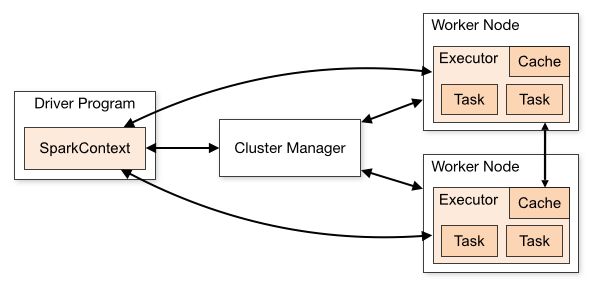- LaTeX Cookbook项目:专业三线表格制作指南
常樱沙Vigour
LaTeXCookbook项目:专业三线表格制作指南latex-cookbookLaTeX论文写作教程(清华大学出版社)项目地址:https://gitcode.com/gh_mirrors/late/latex-cookbook三线表格概述在学术论文和专业文档中,三线表格因其简洁美观的特性而广受欢迎。这种表格通常只包含三条主要水平线:顶线、底线和标题栏下方的分隔线,完全摒弃了垂直分隔线,使得数据
- X-Flux-ComfyUI 技术指南:基于ComfyUI的FLUX扩散模型工作流搭建
X-Flux-ComfyUI技术指南:基于ComfyUI的FLUX扩散模型工作流搭建x-flux-comfyui项目地址:https://gitcode.com/gh_mirrors/xf/x-flux-comfyui前言X-Flux-ComfyUI是一个基于ComfyUI平台的扩展项目,专门为FLUX扩散模型提供了一套完整的工作流节点。本文将详细介绍如何安装配置该扩展,并深入解析各个核心节点的功
- OpenRocket 开发环境搭建指南
邓朝昌Estra
OpenRocket开发环境搭建指南openrocketModel-rocketryaerodynamicsandtrajectorysimulationsoftware项目地址:https://gitcode.com/gh_mirrors/op/openrocket前言OpenRocket是一款开源的火箭设计与仿真软件,采用Java语言开发。本文将详细介绍如何搭建OpenRocket的开发环境,
- mongod源代码Find的QueryPlanner::plan评分最高计划put到cache流程分析
cookqq
算法mongodb数据库nosqlsql
db.user.find({age:28})命令QueryPlanner::plan()只会生成一个执行计划,_pickBestPlan直接选择这个计划。db.user.find({age:28}).sort({wages:1})命令QueryPlanner::plan()会生成两个执行计划,_pickBestPlan循环执行两个计划,根据返回结果等参数进行评分,选择评分高的计划执行。如果db.u
- Amazon Lightsail 实战指南
flybirding10011
AmazonLightsail实战指南AmazonLightsail是亚马逊推出的简单易用的虚拟服务器服务,旨在让用户轻松快速地启动和管理虚拟私有服务器(VPS)。在本指南中,我们将介绍如何使用AmazonLightsail来创建、管理和配置您的虚拟服务器。步骤1:创建Lightsail实例登录AWS管理控制台,并导航到AmazonLightsail页面。点击“创建实例”按钮。在“选择实例位置”中
- Java JNDI LDAP的Filter查询 条件查询 通配符
---------------------------------------------------------------------------------------------------------------------------------逻辑运算符:&逻辑与|逻辑或!逻辑非-----------------------------------------------------
- MySQL常用操作 查看表描述以及表结构、连接数及缓存和性能指标
查看表描述以及表结构查看数据库名SHOWDATABASES;SELECTDATABASE();SELECTDATABASE()AScurrent_database;查看数据库中表的列表SHOWTABLES;SELECTTABLE_NAME,TABLE_COMMENTFROMINFORMATION_SCHEMA.TABLESWHERETABLE_SCHEMA='your_database_name'
- MySQL数据表设计 系统的营销功能 期卡功能和次卡功能的设计
系统的营销功能期卡和次卡期卡,特定类型的预付卡或会员卡,用于特定场合或服务领域,是消费者预先支付一定费用以获得一定期限内的服务资格或优惠权益的凭证。次卡,可以多次使用的卡片,通常具有某种特定的功能或权益。期卡(期限卡):计费方式:按时间周期计费,如月卡、季卡、年卡等,通常包含固定次数或不限次数使用权限。适用场景:适合需要长期高频使用的场景,如健身房、游泳馆等。规则示例:地铁年卡可不限
- 高德地址 AMap.GeoJSON解析geoJson并画出区域图 画出区域图标记出名称 获取地图的坐标
古怪今人
应用功能前端
GeoJSONGeoJSON一种用于编码各种地理数据结构的数据。GeoJSON对象可以表示几何、特征或特征集合。GeoJSON支持以下几何类型:点(Point)、线(LineString)、面(Polygon)、多点(MultiPoint)、多线(MultiLineString)、多面(MultiPolygon)和几何集合(GeometryCollection)。GeoJSON中的功能包含几何对象
- 2025生成式AI革命:从技术原理到商业应用,一文读懂未来十年的颠覆力量
硅基打工人
AI人工智能开源语言模型经验分享
引言:生成式AI为何成为2025年最火爆的技术话题?2025年,生成式AI(GenerativeAI)已从实验室走向千家万户。无论是刷屏的AI绘画、爆火的虚拟主播,还是医疗领域的蛋白质结构预测,生成式AI正以惊人的速度重塑行业格局。据《2025年人工智能发展报告》显示,全球生成式AI市场规模已突破800亿美元,年增长率达45%。与此同时,OpenAI的GPT-5、谷歌的GeminiUltra等大模
- 粒子群算法的原理与实现示例
禺垣
人工智能算法粒子群算法群体智能优化算法
粒子群算法(ParticleSwarmOptimization,PSO)是一种基于群体智能的优化算法,由Kennedy和Eberhart于1995年提出,其灵感来源于鸟群觅食、鱼群游动等自然界中群体行为的协作与信息共享机制。该算法通过模拟群体中个体(粒子)的运动和信息交互,在解空间中搜索最优解,具有实现简单、收敛速度快、参数少等特点,被广泛应用于函数优化、神经网络训练、工程设计等领域。一、算法
- 深度学习基础2
TY-2025
深度学习深度学习人工智能
5.张量索引操作(1)索引操作行列索引列表索引print(data[[0,2],[1,2]])#返回(0,1),(2,2)两个位置的元素print(data[[[0],[1]],[1,2]])#返回0,1行的1,2列共4个元素范围索引print(data[:3,:2])#前3行前2列数据print(data[2:,:2])#第2行到最后的前2列数据布尔索引tensor([[0,7,6,5,9],[
- 软件测试系列--白盒测试覆盖率的问题
测试届老纪
软件测试职场和发展软件测试
覆盖率##一、覆盖率的概念###覆盖率是用来度量测试完整性的一个手段,现在有越来越多的测试工具能够支持覆盖率测试,但是它们本身并不包含测试技术,只是测试技术有效性的一个度量。白盒测试中经常用到的覆盖率是逻辑覆盖率。二、覆盖率的目的###覆盖率对于软件测试有着非常重要的作用,通过覆盖率我们可以知道我们的测试是否充分,我们测试的弱点在哪些方面,进而指导我们设计能够增加覆盖率的测试用例,有效的提高测试质
- 软件测试(功能、接口、性能、自动化)详解 | 测试人生路
一、软件测试功能测试测试用例编写是软件测试的基本技能;也有很多人认为测试用例是软件测试的核心;软件测试中最重要的是设计和生成有效的测试用例;测试用例是测试工作的指导,是软件测试的必须遵守的准则。黑盒测试常见测试用例编写方法1、等价类选取少数有代表性的数据,这一类数据等价于这一类的其它值;找出最小的子集,可以发现最多的错误;特性:必须设计的用例;涵盖了大部分情况;2、边界值所谓边界条件,是指输入和输
- 软件测试-修正判定条件覆盖(MCDC)的一些认识
鲸 Blue
软件测试软件测试职场和发展
修正判定条件覆盖(ModifiedCondition/DecisionCoverage即MC/DC)通过参照上图,我们首先从宏观的角度上理解MCDC在软件测试中的分支。软件测试软件工程开发中中必不可少且非常重要的一部分,软件测试从是否执行代码来看可分为两种测试方法:静态测试和动态测试.静态测试是指不用执行程序的测试,它主要采取方案——代码走查、技术评审、代码审查的方法对软件产品进行测试,通俗来说就
- 新手向:中文语言识别的进化之路
自然语言处理(NLP)技术正在以前所未有的速度改变我们与机器的交互方式,而中文作为世界上使用人数最多的语言,其处理技术面临着独特的挑战与机遇。本文将全面剖析中文自然语言识别模型的发展历程、核心技术原理、当前应用现状以及未来发展趋势,带您深入了解这一改变人机交互方式的关键技术。一、中文NLP的特殊挑战:为什么中文处理如此困难?中文自然语言处理面临着一系列西方语言所不具备的特殊挑战,这些挑战直接影响了
- 算法设计与分析:分治、动态规划与贪心算法的异同与选择
vortex5
算法动态规划贪心算法
在计算机科学中,算法是解决问题的核心。面对复杂问题,算法设计师常常需要将其分解为更小、更易管理的子问题。分治法、动态规划和贪心算法都是基于“原问题”和“子问题”概念的强大策略,但它们在处理子问题的方式、相互关系以及最终解决方案的保证上存在本质区别。理解这些差异对于选择最适合特定问题的算法至关重要。✅一、共同点:都涉及“原问题→子问题”这三种算法范式都遵循将复杂问题分解为更简单部分的思想,这是许多高
- LLM探索的时代
新加坡内哥谈技术
人工智能
每周跟踪AI热点新闻动向和震撼发展想要探索生成式人工智能的前沿进展吗?订阅我们的简报,深入解析最新的技术突破、实际应用案例和未来的趋势。与全球数同行一同,从行业内部的深度分析和实用指南中受益。不要错过这个机会,成为AI领域的领跑者。点击订阅,与未来同行!订阅:https://rengongzhineng.io/当前的大语言模型,是过去三十年人类在互联网上自由发布海量文本内容的意外副产品。IlyaS
- 2025 年使用大模型进行软件工程:现实检验
新加坡内哥谈技术
软件工程人工智能
每周跟踪AI热点新闻动向和震撼发展想要探索生成式人工智能的前沿进展吗?订阅我们的简报,深入解析最新的技术突破、实际应用案例和未来的趋势。与全球数同行一同,从行业内部的深度分析和实用指南中受益。不要错过这个机会,成为AI领域的领跑者。点击订阅,与未来同行!订阅:https://rengongzhineng.io/以工程经理与资深工程师的视角,探讨大厂与初创公司的挑战,以及与Anthropic、Cur
- “猫攻击”揭示推理模型脆弱性,凸显上下文工程的重要性
新加坡内哥谈技术
人工智能
每周跟踪AI热点新闻动向和震撼发展想要探索生成式人工智能的前沿进展吗?订阅我们的简报,深入解析最新的技术突破、实际应用案例和未来的趋势。与全球数同行一同,从行业内部的深度分析和实用指南中受益。不要错过这个机会,成为AI领域的领跑者。点击订阅,与未来同行!订阅:https://rengongzhineng.io/一项研究显示,即便是像“猫一生中大多数时间都在睡觉”这样简单的语句,也可能显著干扰高级推
- Fortinet Security Fabric 解决方案:构建智能化、一体化的网络安全防御体系
江苏思维驱动智能研究院有限公司
安全fabricweb安全
一、方案背景与核心价值:应对数字化时代的安全挑战在云计算、物联网、远程办公等技术普及的背景下,企业网络边界逐渐模糊,攻击面呈指数级扩展。传统单点安全产品难以应对多维度威胁渗透,而FortinetSecurityFabric(安全架构)以“集成化、自动化、智能化”为核心,通过安全能力的协同联动与威胁情报共享,构建覆盖全网络环境的动态防御体系。其核心价值在于:打破安全孤岛:整合分散的安全组件,避免多产
- Complete-Python-Bootcamp项目:Python标准库核心模块详解
常樱沙Vigour
Complete-Python-Bootcamp项目:Python标准库核心模块详解Complete-Python-Bootcamp项目地址:https://gitcode.com/gh_mirrors/co/Complete-Python-BootcampPython标准库是Python语言自带的一组功能强大的模块和包集合,它为开发者提供了开箱即用的各种功能。本文将深入解析Complete-Py
- Amazon Lightsail 全解析:中小企业上云
在企业数字化转型的浪潮中,越来越多的中小企业、创业团队和个人开发者开始寻求更简单、成本更可控的云服务解决方案,AWS推出了专为轻量应用打造的一站式云服务平台——AmazonLightsail。它集计算、存储、网络、数据库、容器等能力于一体,以极低的学习成本和固定月费的定价模式,帮助用户快速启动并管理Web项目、API服务、数据库应用等。本文我将带您全面了解Lightsail的功能优势、应用场景以及
- 算法设计与分析 知识总结
vortex5
算法
一、算法基础算法是对特定问题求解步骤的描述,是指令的有限序列,具有输入、输出、有穷性、确定性和可行性五个性质。程序则是算法用某种编程语言的具体实现。优秀的算法应具备正确性、健壮性、可理解性、抽象分级和高效性,其中时间复杂度是衡量算法效率的重要标准。常用的时间复杂度符号包括O(上界)、Ω(下界)和Θ(紧确界)。1.1时间复杂度分析非递归算法以嵌套循环为例,分析以下代码的时间复杂度:for(i=1;i
- 进阶向:Python音频录制与分析系统详解,从原理到实践
引言本文将详细解析一个完整的音频录制与分析系统,适合所有层次的开发者。这个系统不仅能录制声音,还能进行专业的音频分析,包括音量检测、噪声分析、音频质量评估等功能。我们将从基础概念开始,逐步深入代码的每个细节。第一部分:系统架构概述1.1系统功能模块┌───────────────┐┌──────────────┐┌───────────────┐│音频录制模块│───▶│音频分析模块│───▶│诊
- Google AI 刚刚开源 MCP 数据库工具箱,让 AI 代理安全高效地查询数据库
新加坡内哥谈技术
人工智能
每周跟踪AI热点新闻动向和震撼发展想要探索生成式人工智能的前沿进展吗?订阅我们的简报,深入解析最新的技术突破、实际应用案例和未来的趋势。与全球数同行一同,从行业内部的深度分析和实用指南中受益。不要错过这个机会,成为AI领域的领跑者。点击订阅,与未来同行!订阅:https://rengongzhineng.io/https://github.com/googleapis/genai-toolboxG
- 2024年12月30日Github流行趋势
项目名称:free-programming-books项目地址url:https://github.com/EbookFoundation/free-programming-books项目语言:HTML历史star数:343,398今日star数:246项目维护者:vhf,eshellman,davorpa,MHM5000,kadhirash项目简介:免费提供的编程书籍。项目名称:public-a
- 329. 矩阵中的最长递增路径C语言
给定一个mxn整数矩阵matrix,找出其中最长递增路径的长度。对于每个单元格,你可以往上,下,左,右四个方向移动。你不能在对角线方向上移动或移动到边界外(即不允许环绕)。来源:力扣(LeetCode)链接:https://leetcode-cn.com/problems/longest-increasing-path-in-a-matrix著作权归领扣网络所有。商业转载请联系官方授权,非商业转载
- 力扣 329. 矩阵中的最长递增路径
乔碧萝·乔斯达
leetcode矩阵算法
跳转至矩阵中的最长递增路径https://leetcode-cn.com/problems/longest-increasing-path-in-a-matrix/题目给定一个mxn整数矩阵matrix,找出其中最长递增路径的长度。对于每个单元格,你可以往上,下,左,右四个方向移动。你不能在对角线方向上移动或移动到边界外(即不允许环绕)。示例1:输入:matrix=[[9,9,4],[6,6,8]
- Flask 解决 JSON 返回中文乱码问题方案
超龄超能程序猿
flaskpython后端
在Flask开发中,API返回中文时默认会转换为Unicode转义序列。本文提供5种解决方案:全局配置:设置app.config[‘JSON_AS_ASCII’]=False,简单高效自定义JSON编码器:继承DefaultJSONProvider,扩展性强手动序列化:使用json.dumps(ensure_ascii=False)配合Response对象装饰器处理:批量处理多个接口的返回数据Ng
- ASM系列五 利用TreeApi 解析生成Class
lijingyao8206
ASM字节码动态生成ClassNodeTreeAPI
前面CoreApi的介绍部分基本涵盖了ASMCore包下面的主要API及功能,其中还有一部分关于MetaData的解析和生成就不再赘述。这篇开始介绍ASM另一部分主要的Api。TreeApi。这一部分源码是关联的asm-tree-5.0.4的版本。
在介绍前,先要知道一点, Tree工程的接口基本可以完
- 链表树——复合数据结构应用实例
bardo
数据结构树型结构表结构设计链表菜单排序
我们清楚:数据库设计中,表结构设计的好坏,直接影响程序的复杂度。所以,本文就无限级分类(目录)树与链表的复合在表设计中的应用进行探讨。当然,什么是树,什么是链表,这里不作介绍。有兴趣可以去看相关的教材。
需求简介:
经常遇到这样的需求,我们希望能将保存在数据库中的树结构能够按确定的顺序读出来。比如,多级菜单、组织结构、商品分类。更具体的,我们希望某个二级菜单在这一级别中就是第一个。虽然它是最后
- 为啥要用位运算代替取模呢
chenchao051
位运算哈希汇编
在hash中查找key的时候,经常会发现用&取代%,先看两段代码吧,
JDK6中的HashMap中的indexFor方法:
/**
* Returns index for hash code h.
*/
static int indexFor(int h, int length) {
- 最近的情况
麦田的设计者
生活感悟计划软考想
今天是2015年4月27号
整理一下最近的思绪以及要完成的任务
1、最近在驾校科目二练车,每周四天,练三周。其实做什么都要用心,追求合理的途径解决。为
- PHP去掉字符串中最后一个字符的方法
IT独行者
PHP字符串
今天在PHP项目开发中遇到一个需求,去掉字符串中的最后一个字符 原字符串1,2,3,4,5,6, 去掉最后一个字符",",最终结果为1,2,3,4,5,6 代码如下:
$str = "1,2,3,4,5,6,";
$newstr = substr($str,0,strlen($str)-1);
echo $newstr;
- hadoop在linux上单机安装过程
_wy_
linuxhadoop
1、安装JDK
jdk版本最好是1.6以上,可以使用执行命令java -version查看当前JAVA版本号,如果报命令不存在或版本比较低,则需要安装一个高版本的JDK,并在/etc/profile的文件末尾,根据本机JDK实际的安装位置加上以下几行:
export JAVA_HOME=/usr/java/jdk1.7.0_25
- JAVA进阶----分布式事务的一种简单处理方法
无量
多系统交互分布式事务
每个方法都是原子操作:
提供第三方服务的系统,要同时提供执行方法和对应的回滚方法
A系统调用B,C,D系统完成分布式事务
=========执行开始========
A.aa();
try {
B.bb();
} catch(Exception e) {
A.rollbackAa();
}
try {
C.cc();
} catch(Excep
- 安墨移动广 告:移动DSP厚积薄发 引领未来广 告业发展命脉
矮蛋蛋
hadoop互联网
“谁掌握了强大的DSP技术,谁将引领未来的广 告行业发展命脉。”2014年,移动广 告行业的热点非移动DSP莫属。各个圈子都在纷纷谈论,认为移动DSP是行业突破点,一时间许多移动广 告联盟风起云涌,竞相推出专属移动DSP产品。
到底什么是移动DSP呢?
DSP(Demand-SidePlatform),就是需求方平台,为解决广 告主投放的各种需求,真正实现人群定位的精准广
- myelipse设置
alafqq
IP
在一个项目的完整的生命周期中,其维护费用,往往是其开发费用的数倍。因此项目的可维护性、可复用性是衡量一个项目好坏的关键。而注释则是可维护性中必不可少的一环。
注释模板导入步骤
安装方法:
打开eclipse/myeclipse
选择 window-->Preferences-->JAVA-->Code-->Code
- java数组
百合不是茶
java数组
java数组的 声明 创建 初始化; java支持C语言
数组中的每个数都有唯一的一个下标
一维数组的定义 声明: int[] a = new int[3];声明数组中有三个数int[3]
int[] a 中有三个数,下标从0开始,可以同过for来遍历数组中的数
- javascript读取表单数据
bijian1013
JavaScript
利用javascript读取表单数据,可以利用以下三种方法获取:
1、通过表单ID属性:var a = document.getElementByIdx_x_x("id");
2、通过表单名称属性:var b = document.getElementsByName("name");
3、直接通过表单名字获取:var c = form.content.
- 探索JUnit4扩展:使用Theory
bijian1013
javaJUnitTheory
理论机制(Theory)
一.为什么要引用理论机制(Theory)
当今软件开发中,测试驱动开发(TDD — Test-driven development)越发流行。为什么 TDD 会如此流行呢?因为它确实拥有很多优点,它允许开发人员通过简单的例子来指定和表明他们代码的行为意图。
TDD 的优点:
&nb
- [Spring Data Mongo一]Spring Mongo Template操作MongoDB
bit1129
template
什么是Spring Data Mongo
Spring Data MongoDB项目对访问MongoDB的Java客户端API进行了封装,这种封装类似于Spring封装Hibernate和JDBC而提供的HibernateTemplate和JDBCTemplate,主要能力包括
1. 封装客户端跟MongoDB的链接管理
2. 文档-对象映射,通过注解:@Document(collectio
- 【Kafka八】Zookeeper上关于Kafka的配置信息
bit1129
zookeeper
问题:
1. Kafka的哪些信息记录在Zookeeper中 2. Consumer Group消费的每个Partition的Offset信息存放在什么位置
3. Topic的每个Partition存放在哪个Broker上的信息存放在哪里
4. Producer跟Zookeeper究竟有没有关系?没有关系!!!
//consumers、config、brokers、cont
- java OOM内存异常的四种类型及异常与解决方案
ronin47
java OOM 内存异常
OOM异常的四种类型:
一: StackOverflowError :通常因为递归函数引起(死递归,递归太深)。-Xss 128k 一般够用。
二: out Of memory: PermGen Space:通常是动态类大多,比如web 服务器自动更新部署时引起。-Xmx
- java-实现链表反转-递归和非递归实现
bylijinnan
java
20120422更新:
对链表中部分节点进行反转操作,这些节点相隔k个:
0->1->2->3->4->5->6->7->8->9
k=2
8->1->6->3->4->5->2->7->0->9
注意1 3 5 7 9 位置是不变的。
解法:
将链表拆成两部分:
a.0-&
- Netty源码学习-DelimiterBasedFrameDecoder
bylijinnan
javanetty
看DelimiterBasedFrameDecoder的API,有举例:
接收到的ChannelBuffer如下:
+--------------+
| ABC\nDEF\r\n |
+--------------+
经过DelimiterBasedFrameDecoder(Delimiters.lineDelimiter())之后,得到:
+-----+----
- linux的一些命令 -查看cc攻击-网口ip统计等
hotsunshine
linux
Linux判断CC攻击命令详解
2011年12月23日 ⁄ 安全 ⁄ 暂无评论
查看所有80端口的连接数
netstat -nat|grep -i '80'|wc -l
对连接的IP按连接数量进行排序
netstat -ntu | awk '{print $5}' | cut -d: -f1 | sort | uniq -c | sort -n
查看TCP连接状态
n
- Spring获取SessionFactory
ctrain
sessionFactory
String sql = "select sysdate from dual";
WebApplicationContext wac = ContextLoader.getCurrentWebApplicationContext();
String[] names = wac.getBeanDefinitionNames();
for(int i=0; i&
- Hive几种导出数据方式
daizj
hive数据导出
Hive几种导出数据方式
1.拷贝文件
如果数据文件恰好是用户需要的格式,那么只需要拷贝文件或文件夹就可以。
hadoop fs –cp source_path target_path
2.导出到本地文件系统
--不能使用insert into local directory来导出数据,会报错
--只能使用
- 编程之美
dcj3sjt126com
编程PHP重构
我个人的 PHP 编程经验中,递归调用常常与静态变量使用。静态变量的含义可以参考 PHP 手册。希望下面的代码,会更有利于对递归以及静态变量的理解
header("Content-type: text/plain");
function static_function () {
static $i = 0;
if ($i++ < 1
- Android保存用户名和密码
dcj3sjt126com
android
转自:http://www.2cto.com/kf/201401/272336.html
我们不管在开发一个项目或者使用别人的项目,都有用户登录功能,为了让用户的体验效果更好,我们通常会做一个功能,叫做保存用户,这样做的目地就是为了让用户下一次再使用该程序不会重新输入用户名和密码,这里我使用3种方式来存储用户名和密码
1、通过普通 的txt文本存储
2、通过properties属性文件进行存
- Oracle 复习笔记之同义词
eksliang
Oracle 同义词Oracle synonym
转载请出自出处:http://eksliang.iteye.com/blog/2098861
1.什么是同义词
同义词是现有模式对象的一个别名。
概念性的东西,什么是模式呢?创建一个用户,就相应的创建了 一个模式。模式是指数据库对象,是对用户所创建的数据对象的总称。模式对象包括表、视图、索引、同义词、序列、过
- Ajax案例
gongmeitao
Ajaxjsp
数据库采用Sql Server2005
项目名称为:Ajax_Demo
1.com.demo.conn包
package com.demo.conn;
import java.sql.Connection;import java.sql.DriverManager;import java.sql.SQLException;
//获取数据库连接的类public class DBConnec
- ASP.NET中Request.RawUrl、Request.Url的区别
hvt
.netWebC#asp.nethovertree
如果访问的地址是:http://h.keleyi.com/guestbook/addmessage.aspx?key=hovertree%3C&n=myslider#zonemenu那么Request.Url.ToString() 的值是:http://h.keleyi.com/guestbook/addmessage.aspx?key=hovertree<&
- SVG 教程 (七)SVG 实例,SVG 参考手册
天梯梦
svg
SVG 实例 在线实例
下面的例子是把SVG代码直接嵌入到HTML代码中。
谷歌Chrome,火狐,Internet Explorer9,和Safari都支持。
注意:下面的例子将不会在Opera运行,即使Opera支持SVG - 它也不支持SVG在HTML代码中直接使用。 SVG 实例
SVG基本形状
一个圆
矩形
不透明矩形
一个矩形不透明2
一个带圆角矩
- 事务管理
luyulong
javaspring编程事务
事物管理
spring事物的好处
为不同的事物API提供了一致的编程模型
支持声明式事务管理
提供比大多数事务API更简单更易于使用的编程式事务管理API
整合spring的各种数据访问抽象
TransactionDefinition
定义了事务策略
int getIsolationLevel()得到当前事务的隔离级别
READ_COMMITTED
- 基础数据结构和算法十一:Red-black binary search tree
sunwinner
AlgorithmRed-black
The insertion algorithm for 2-3 trees just described is not difficult to understand; now, we will see that it is also not difficult to implement. We will consider a simple representation known
- centos同步时间
stunizhengjia
linux集群同步时间
做了集群,时间的同步就显得非常必要了。 以下是查到的如何做时间同步。 在CentOS 5不再区分客户端和服务器,只要配置了NTP,它就会提供NTP服务。 1)确认已经ntp程序包: # yum install ntp 2)配置时间源(默认就行,不需要修改) # vi /etc/ntp.conf server pool.ntp.o
- ITeye 9月技术图书有奖试读获奖名单公布
ITeye管理员
ITeye
ITeye携手博文视点举办的9月技术图书有奖试读活动已圆满结束,非常感谢广大用户对本次活动的关注与参与。 9月试读活动回顾:http://webmaster.iteye.com/blog/2118112本次技术图书试读活动的优秀奖获奖名单及相应作品如下(优秀文章有很多,但名额有限,没获奖并不代表不优秀):
《NFC:Arduino、Andro
